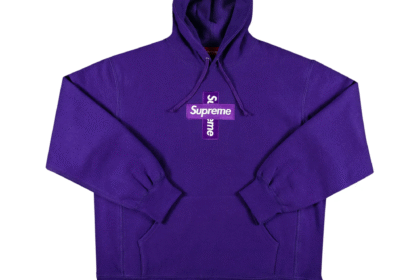Every great product starts with a design challenge and the best UI/UX designer knows how to turn those challenges into opportunities. Case studies are the heartbeat of design innovation; they tell the story behind the pixels, showcasing how research, empathy, and iteration shape real-world digital experiences.
We’ll explore UI/UX design case studies that not only inspire creativity but also demonstrate how thoughtful design can drive engagement, satisfaction, and business growth.
Why UI/UX Case Studies Matter
Before diving into the examples, let’s understand why case studies are so valuable.
A well-documented case study helps designers and businesses:
- Understand real design problems and how they were solved
- Learn from user behavior and usability testing insights
- See how design thinking transforms products
- Inspire innovation for their own projects
These stories prove that great design isn’t about luck — it’s about strategy, empathy, and iteration.
1. Airbnb – Redefining Trust Through Simplicity
When Airbnb was still a young company, it faced a major problem: users didn’t trust strangers enough to book stays online.
The challenge: Building trust between hosts and travelers.
The solution: The Airbnb design team simplified the entire booking process, emphasizing trust signals verified photos, clear typography, and friendly iconography.
They also introduced user profiles, reviews, and social proof — design decisions that transformed Airbnb into a global hospitality giant.
Takeaway:
Simplicity, transparency, and empathy build trust. Good UI/UX doesn’t just improve visuals — it changes behavior.
2. Spotify – Personalization That Connects Emotionally
Spotify’s design team revolutionized the way people listen to music. Their focus was clear: make discovery intuitive and emotional.
The challenge: Helping users find the right music easily.
The solution: Spotify introduced personalized playlists like Discover Weekly and Daily Mix, powered by algorithms but designed with empathy.
They used clean interfaces, visual hierarchy, and bold typography to highlight recommendations, making users feel understood and valued.
Takeaway:
Personalization isn’t just data-driven — it’s emotion-driven. Spotify’s design shows that the best UX connects users with what they love, not just what they need.
3. Duolingo – Gamifying Learning Through UI Design
Language learning apps often struggle to keep users motivated. Duolingo tackled this by making learning fun and interactive through gamification.
The challenge: Increasing user retention in a learning app.
The solution: Duolingo used reward systems, progress bars, and friendly illustrations to make language learning engaging. The mascot, Duo the owl, adds emotional warmth and personality.
Microinteractions, such as confetti animations and sounds, reward users for small wins — keeping them coming back daily.
Takeaway:
UI/UX design can transform boring tasks into enjoyable experiences when paired with gamification and personality.
4. Slack – Making Communication Effortless
Slack turned corporate communication into something people actually enjoy using.
The challenge: Simplifying team collaboration and message overload.
The solution: Slack used color psychology, intuitive navigation, and search-focused UX to make conversations quick and organized.
By combining playful design with strong usability, Slack humanized workplace communication — without sacrificing professionalism.
Takeaway:
Good design solves pain points users didn’t even realize they had.
5. Headspace – Designing Calmness and Mindfulness
In a world full of distractions, Headspace designed an app experience that feels like a breath of fresh air.
The challenge: Creating a digital product that feels peaceful and stress-free.
The solution: The design team used soft colors, rounded shapes, and friendly animations to evoke calmness.
Every screen reflects mindfulness — minimal text, soothing illustrations, and plenty of whitespace.
Takeaway:
UI/UX design isn’t just about usability — it’s about emotion. Design can make users feel calm, happy, or motivated.
6. Netflix – Intuitive Interfaces for Global Audiences
Netflix has mastered personalized content delivery for millions worldwide.
The challenge: Designing for diverse user preferences and devices.
The solution: Netflix’s UX team focused on simplicity, personalization, and accessibility.
From autoplay previews to personalized thumbnails, every design decision encourages users to watch more — effortlessly.
Takeaway:
When your UI adapts intelligently to users’ preferences, engagement skyrockets.
7. Google Maps – Usability at Scale
Millions depend on Google Maps every day, and yet its interface remains intuitive and simple.
The challenge: Presenting complex geographic data in a user-friendly way.
The solution: Layered information design — clear icons, smart color contrasts, and interactive gestures make navigation effortless.
Frequent updates and usability testing ensure that even non-tech-savvy users can use it easily.
Takeaway:
Usability and accessibility should scale with innovation — never compromise on clarity.
Key Lessons from These Case Studies
Here’s what these inspiring UI/UX design examples have in common:
- User-Centered Thinking: Every design starts with understanding user needs.
- Consistency: Color, layout, and typography are used systematically.
- Emotion-Driven Design: The best designs connect emotionally, not just functionally.
- Testing and Iteration: Great UX comes from feedback, not assumptions.
- Simplicity Wins: Minimal, clear interfaces make complex ideas easy to understand.
These case studies remind us that great UI/UX isn’t about aesthetics alone — it’s about empathy, function, and continuous improvement.
How to Apply These Insights to Your Own Projects
If you’re a designer or business owner, here’s how you can apply these principles:
- Start with user research — know your audience deeply.
- Focus on clarity — every design element should have a purpose.
- Test early, iterate often — data is your best design guide.
- Build emotional engagement — design experiences that users love, not just use.
- Keep your designs accessible and inclusive.
Innovation happens when empathy meets strategy — and UI/UX design is where that magic comes alive.
Conclusion
These UI/UX design case studies prove one thing: innovative design starts with understanding people. When designers solve real problems through empathy and creativity, products become not just functional but unforgettable.
Whether you’re building a startup app, redesigning a website, or creating a SaaS dashboard, learn from these examples. Focus on clarity, accessibility, and emotion — and your design will inspire innovation too.




